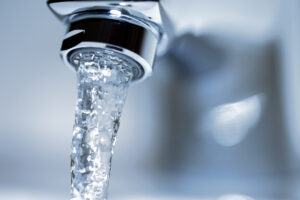NDWAC MDBP Working Group Releases Report

The National Drinking Water Advisory Council (NDWAC) has been utilizing its Microbial and Disinfection Byproducts (MDBP) Working Group to develop recommendations on the proposed revisions to the MDBP rule. The NDWAC MDBP Working Group recently released its report to the full NDWAC. Written and oral statements on this report are due by noon Eastern Time on November 21 and can be submitted to NDWAC@epa.gov.
The next NDWAC MDBP meetings will be on November 28, November 29, and November 30, 2023, from 10:30 a.m. to 5:30 p.m. Eastern Time each day, and registration for these meetings (not up yet) will be on this page.
A quick summary of the NDWAC MDBP Working Group’s recommendations to the full NDWAC:
- Recommendation 1: Disinfectant Residual – Address the potential for no or low disinfectant residual in surface water Public Water System (PWS) distribution systems (DS)
- Recommendation 2: Premise Plumbing – EPA should advance a national building water quality improvement initiative based on an enhanced partnership among federal agencies and state SDWA oversight agencies.
- Recommendation 3: DBPs of Emerging Concern – Address data and analysis gaps associated with DBPs of emerging concern.
- Recommendation 4: Multi-Benefit Precursor Control – Establish a PWS source water evaluation screening requirement and, under defined conditions, provide additional mandatory treatment to reduce DBP formation and disinfectant demand.
- Recommendation 5: Finished Water Storage Tanks – Address finished water storage tank vulnerabilities by establishing a national inspection and cleaning as needed requirement; supported by a review and update as needed of current storage tank operations and maintenance guidance.
- Recommendation 6: Chloramination – Improve chloramination practices to promote control of microbial contamination and DBP formation potential and improve overall consistency of water quality.
- Recommendation 7: Consecutive Systems – Improve water quality and regulatory compliance rates for consecutive systems.
- Recommendation 8: Source Control – Leverage non-SDWA authorities
- Recommendation 9: Environmental Justice (EJ) Improvement Opportunities – Conduct analyses to characterize the current gap in MDBP rule implementation and affordability pressures faced by public water systems serving EJ, disadvantaged and historically underserved communities. Provide strategies for ensuring this gap is filled and to work toward more equitable implementation of the MDBP rules across demographic groups. Ensure that new requirements can be implemented consistently, with sufficient additional resources provided to equitably receive the benefits anticipated to result from the rule revisions.
- Recommendation 10: Public Water System (PWS) Technical, Managerial, and Financial (TMF) Capacity – Provide and align additional TMF capacity for small, rural, EJ, disadvantaged and historically underserved communities consistent with new demands placed on PWS by MDBP rules revision.
- Recommendation 11: Primacy Agency Capacity – Address SDWA Primacy Agency capacity needs associated with the new demands anticipated from MDBP rule revisions.
- Recommendation 12: MDBP Overall Data and Analysis Gaps – Address gaps in data and analysis related to microbial and DBP contaminants.
- Recommendation 13: Ground Water Under the Direct Influence of Surface Water (GWUDI) – EPA should revisit the definition, determination methods, and guidance for GWUDI to ascertain what changes should be made to improve the protection of public health.

